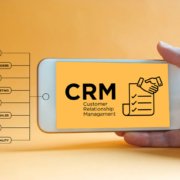Senior Living CRM Software: 6 Things To Consider When Choosing
It is such an exciting time in the senior living industry with the influx of innovation. One area of growth is in senior living CRM software. Of course, with more choice, you can have more confusion. Below, you’ll find six things to keep in mind when choosing your system.
1. Avoid retrofitted CRMs of yesterday.
CRMs were primarily designed for either the multi-family housing or real estate industries. Then, they were adapted for senior housing use. Retrofits tend to have clunky user interfaces, multiple entries of duplicate information, and clumsy navigation. AVOID!
2. Choose a senior living CRM.
In other words, choose senior living software developed by senior living operators, sales trainers, and experienced thought leaders. How to tell? Visit the industry section on the CRM website. Or look for case studies that highlight use in senior living industries. It’s OK if the CRM company caters to several target markets. Just make sure senior living is among them.
3. Decide between a stand-alone or integrated CRM.
An integrated CRM is connected to a suite of software resources, including clinical and billing/accounting functions. (And sometimes pharmacy, staffing, HR & payroll.) The upside: the flow of data between departments. The downside is that usually there is one area of strength (strong in accounting/ GL/ financial reporting and budgets) but is weak in the clinical or CRM component – or both. But once you choose integration, you are stuck with the entire suite leaving some stakeholders frustrated.
A stand-alone CRM only manages the lead base and sales process. The upside is that there are some great choices that match a preferred sales method or philosophy. Also, because it is built specifically for sales, there are usually features included that are not standard in integrated solutions. The downside: once the sale closes, resident information has to be re-entered into clinical and billing/financial systems creating a duplication of effort and an extra investment of time.
4. Evaluate your current situation.
Finding the right senior living CRM software requires an honest analysis of where your community/company is today with both the existing resource, the sales culture, the user comfort level with technology, and training/implementation resources. Begin by getting feedback from stakeholders at every level. What do they think works about the current solution? The goal: to retain the positives of your current solution.
5. Begin with the end in mind.
Once you understand the above, the next step involves evaluating the gaps and what you want to accomplish with the change. Community, regional, and corporate users will have different priorities. So, it’s important to create a work group representing different roles.
6. Participate in demos of senior living CRM software.
Equipped with a “wish list” and workgroup, you’ll be able to narrow down your choices. Schedule demos with the senior living CRMs that match your requirements. In addition to demos, request access to a test site or sandbox so your users can take the software for a test drive.
Some features sound great, but if they’re too complex for an average user, why bother? Ask lots of questions. This is a high value purchase. A thoughtful and deliberate decision making process is a worthy investment.
When considering the cost, be sure to find out if pricing is based on the number of users, priced by community with unlimited users, a subscription, etc. Ask if there’s an additional cost to migrate data from your current system to the new software. You might be facing set-up fees and training & support fees as well.
Work with an agency that can help you select and implement your CRM.
That would be us! :) We can help you find the perfect CRM for your needs. We have some favorites that we work with (like Sherpa CRM). Plus, we can show you how to get the most out of it. Let’s chat!






 Ever since we entered this world we have been labeled. Newborn. Cute. Colicy. Chubby. Then as we grew our labels grew along with us. Fast, small, smart, tall. Rich, poor, weird or a bore. And we labeled others because there is a natural tendency to put people that we meet in categories. The further we travelled in life the more the labels – mother, sister, wife, doctor, nurse, shy, lazy, etc. These labels become stereotypes – and these become judgements and biases.
Ever since we entered this world we have been labeled. Newborn. Cute. Colicy. Chubby. Then as we grew our labels grew along with us. Fast, small, smart, tall. Rich, poor, weird or a bore. And we labeled others because there is a natural tendency to put people that we meet in categories. The further we travelled in life the more the labels – mother, sister, wife, doctor, nurse, shy, lazy, etc. These labels become stereotypes – and these become judgements and biases.



